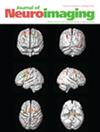Functional Brain Abnormalities in Patients With Accommodative Asthenopia: A Resting-State fMRI Study
Abstract
Background and Purpose
Excessive electronic device use has intensified visual workload, resulting in accommodative asthenopia (AA). Our previous functional MRI (fMRI) studies linked abnormal brain function to AA, prompting this resting-state fMRI study to explore local and global brain activity changes.
Methods
We recruited 33 healthy controls and 44 patients with AA, analyzing regional brain function via coherent regional homogeneity (Cohe-ReHo) and amplitude of low-frequency fluctuation (ALFF)/fractional ALFF (fALFF). Group independent component analysis (gICA) extracted independent components (ICs) for spatial comparison, and static/dynamic functional network connectivity (sFNC/dFNC) assessed subnetwork interactions.
Results
Patients with AA had increased ALFF in regions of the right cerebellum 9, superior lobe of the right cerebellum, left cerebellum 8, left cerebellum 9, and left brainstem; there were negative regions in the frontal lobe (also the same area found in fALFF values) and the right postcentral gyrus. Cohe-ReHo was elevated in the inferior lobes of the bilateral cerebellum and left caudate nucleus but reduced in the left median cingulate, paracingulate gyri, and right precentral gyrus. Correlation analysis among Cohe-ReHo, ALFF/fALFF values, and asthenopia survey scores showed that the correlation had no statistical significance. The gICA revealed that the spatial distribution of ICs showed no difference. The results of sFNC and dFNC analysis showed that there was no difference.
Conclusions
Patients with AA had regional brain dysfunction. In the analysis of brain subnetworks, there was no difference between the groups in terms of the spatial organization of subnetworks or the static and dynamic connectivity between subnetworks.

 求助内容:
求助内容: 应助结果提醒方式:
应助结果提醒方式:


